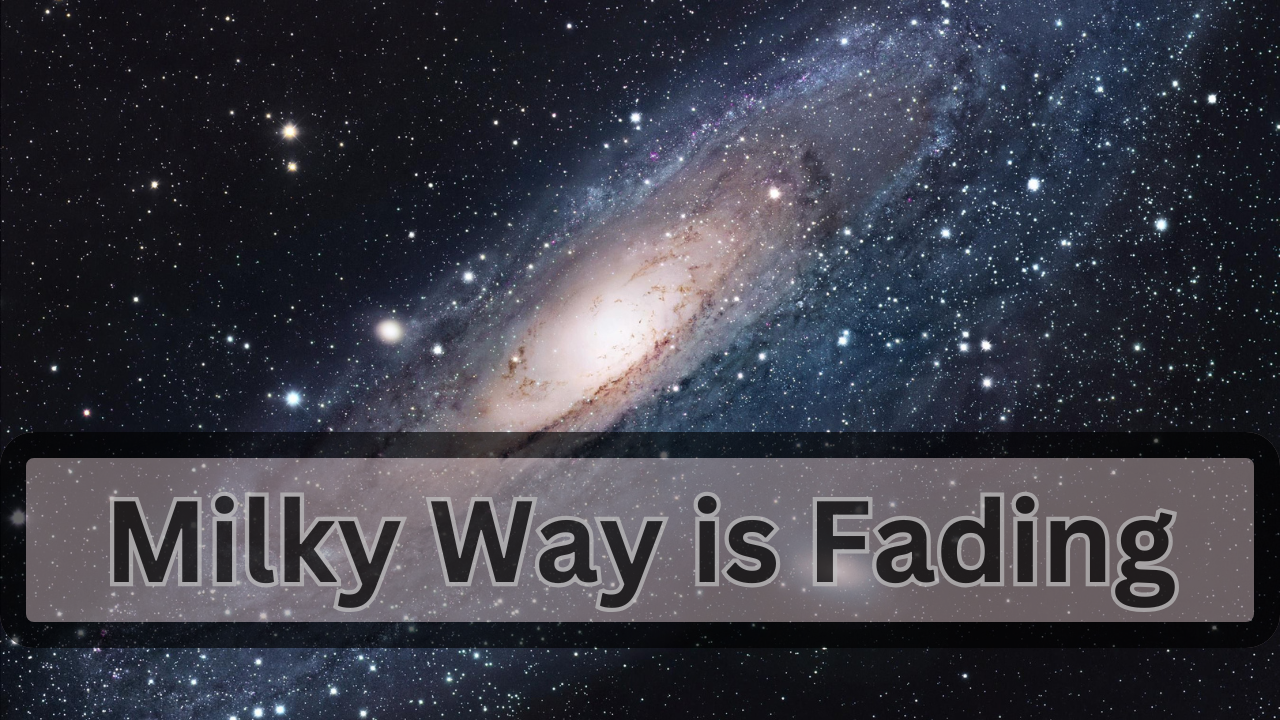The Milky Way appears vastly different from what our parents used to see 20 years ago. They experienced a sky filled with stars, but now, the Milky Way has significantly dimmed. If this continues, future generations might only see the Milky Way in old photos instead of the night sky.
Dimming of the Milky Way:
A 2011 study published in the Journal of Science reported that where we once saw around 100 stars in the sky, today’s count has dropped to just 34 stars from the same location. It’s not just about the stars or the Milky Way; it’s about humanity’s overwhelming impact on the Earth, leading to the loss of such natural wonders.
Light Pollution and Star Visibility:
Currently, only seven places in India offer a clear view of the Milky Way. A similar situation began in the US in 1994, when an earthquake in Los Angeles caused citywide power outages. The sudden darkness allowed residents to see a clear sky filled with stars, planets, and even satellites for the first time, which they mistook for a potential threat, prompting calls to emergency services. This incident, although humorous in hindsight, showcases a deeper issue: many people have never seen the Milky Way due to light pollution.
Importance of the Milky Way:
While some might think the visibility of the Milky Way is trivial, it plays a crucial role in the ecosystem. For example, in South Africa, the dung beetle relies on the Milky Way for navigation. Biologists discovered that these beetles use the Milky Way’s light to move in a straight line at night. If the Milky Way becomes invisible, their behavior could change, potentially affecting their survival and the broader food chain.
Effects on Ecosystems:
The disappearance of the Milky Way could impact various species, such as the indigo bunting bird and sea turtles, which also depend on starlight for navigation. If these animals become extinct, the repercussions could ripple through the entire food chain, eventually affecting humans and the ecosystem.
The Role of Light Pollution:
Extensive research by scientists has identified a specific type of pollution responsible for this phenomenon: light pollution. Physicist Fabio Falci from Italy’s National Association for Protection of Night Environment highlighted the impact of artificial lights on the night sky’s quality. His study categorized the brightness of common celestial objects across different regions, revealing that areas with high light pollution lose their night sky visibility.
Global Light Pollution:
Falci’s study showed that places with high populations and development, like New York, Paris, and Mumbai, suffer the worst light pollution, leading to a poor night sky quality. Contrastingly, remote areas like the Rajasthan desert still offer a clear view of the Milky Way. Notably, light pollution is often compounded by air pollution, further scattering light and diminishing star visibility.
The Future of the Night Sky:
Even if we manage to control light and air pollution in the next 50 years, we might still struggle to see the Milky Way due to ongoing patterns of pollution. The combined effects of these pollutants make it harder to reclaim the wonders of our natural night sky.
Myopia and Light Pollution:
In 2016, American Academy of Ophthalmology scientists revealed that by 2050, nearly half of the world’s population could be affected by myopia (nearsightedness). Increased screen time is impacting our vision distances. Myopia, prevalent in light-polluted countries like Singapore, means residents there will struggle to see the Milky Way soon.
Natural Changes:
Natural factors, such as future volcanic eruptions or the expanding universe, may also obscure the Milky Way from Earth’s view. The natural process is being accelerated by human activities, which already obscure the Milky Way today.
Conclusion:
Due to light pollution and air pollution, the Milky Way’s visibility is diminishing rapidly. Even if we manage to control pollution significantly, natural changes will eventually obscure the Milky Way. However, human activities are accelerating this process, meaning the natural night sky we once enjoyed is fading faster than anticipated.
Frequently Asked Questions (FAQs):
Q: What causes the reduction in visible stars? A: Light and air pollution are primary contributors, scattering light and reducing visibility of celestial objects.
Q: How does light pollution affect animals? A: Some animals, such as dung beetles and sea turtles, rely on the Milky Way for navigation, and its disappearance could disrupt their behavior and survival.
Q: Can we still see the Milky Way in certain places? A: Yes, remote areas with minimal light pollution, like the Rajasthan desert, still offer a clear view of the Milky Way.
Q: Why did residents in Los Angeles panic seeing the Milky Way? A: During a 1994 earthquake-caused blackout, residents unfamiliar with the night sky mistook the bright Milky Way for a threatening cloud.
Q: Is it possible to restore the night sky visibility? A: Reducing light and air pollution can improve visibility, but it requires global efforts and long-term commitment.
